My late friend Laurie Kingston published a book in 2009, Not Done Yet, her tale of being diagnosed with, and living with, metastatic breast cancer. I accidentally found my way to the book on my own, years before Catherine herself was diagnosed with the same cancer, and I will be forever thankful to Laurie for unwittingly preparing me for something about what was to come.
Early in her book, in the chapter What (Not) to Say, Laurie wrote:
It’s not easy to know how to respond when someone tells you she has breast cancer, but for goodness sake, say something. As hard as it is, and as awkward as you might feel, it is worse to say nothing than to mutter a few heartfelt words.
When Catherine was diagnosed–a process the spun from biopsy to single mastectomy to double mastectomy to, oh, no, wait, none of that, it’s incurable-but-treatable in a dizzyingly fast progression–I realized that part of my job was to manage the flow of information to Catherine’s family, friends and familiars: I knew that having to update everyone she knew about the latest scan, or how she was feeling, or what she needed, could quickly sap her of her increasingly scarce energy.
So I did what comes naturally: I started an email newsletter.
I started off tentatively, on October 21, 2014:
Apologies for moving so quickly from handcrafted individual emails to a mailing list, but I was beginning to lose track of who I’d told what about Catherine and her progress, and this seems like a way of doing so that’s sustainable, but without the publicness of a blog, which would make Catherine uncomfortable. Catherine has, however, blessed this alternative.
At that point I had no way of knowing that, five years and more than 50,000 words later, I’d still be writing in October of 2019:
It’s been a month since I last updated you all on Catherine. At the time of my last update Catherine was in hospital; she ended up staying there for a week, primarily to allow her to rest, get re-hydrated, and get herself on an even keel after a challenging recovery from her radiation treatment and the restart of her oral chemotherapy.
Catherine lived for more than five years with her incurable-but-treatable condition, until her death in January of this year.
Going back this fall to re-read the tale of ups and downs and forks in the road, of radiation and chemotherapy, experimental treatment, and an ambulance running over her cell phone, I came to think that while the words weren’t written for public consumption, they might be useful words to families finding themselves on a journey similar to ours, and people supporting them. So much of the anxiety of living with cancer, and supporting someone living with cancer is fear of the unknown; while everyone’s path is unique, I knew from having read Laurie’s book that having some sense of the terrain could be useful.
And so I turned those words into a book.
Itself all a somewhat harrowing experience, both because book design was something I hadn’t practiced for a quarter century, and, more so, because doing so took me back to relive a lot of really hard experiences.
A box of those books arrived today, and you can purchase a copy locally from The Bookmark in Charlottetown, or order a copy by mail from my Queen Square Press shop.
To give you a taste of what to expect, here are the first 20 pages of the book as a PDF.
Two days after Catherine died, I wrote, both here and in the newsletter:
I’ve learned in the last 48 hours that I can’t outrun grief through writing, though: it has its own rules and schedules, and, despite my delusions to the contrary, you can’t write an essay and earn an exemption. But I am finding that you can earn some extra credit.
Thank goodness for that extra credit: beyond any service to Catherine and her circles, writing was how I managed my own way. And having the opportunity to revisit those words, and those years, has been, yes, harrowing. But also healing.
Thank you to my mother Frances for editing assistance, my sister-in-law Karen for coming up with a subtitle, my brother Mike for offering me words of encouragement, and to Oliver for being my son, and for putting up with more than usual frozen pizzas while I’ve pulled all this together.
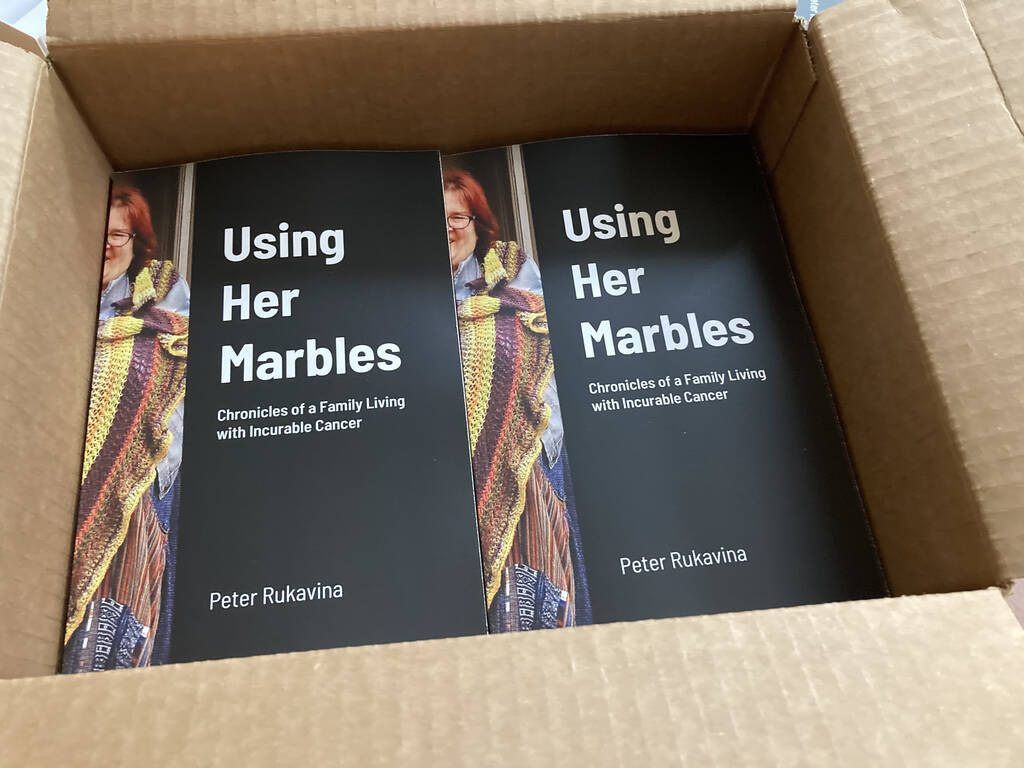
It’s a rare warm autumn today, 13ºC as I write, and so I decided to do my local Queen Square Press deliveries this morning on foot.
As a result, I walked more than 7,000 steps before noon:
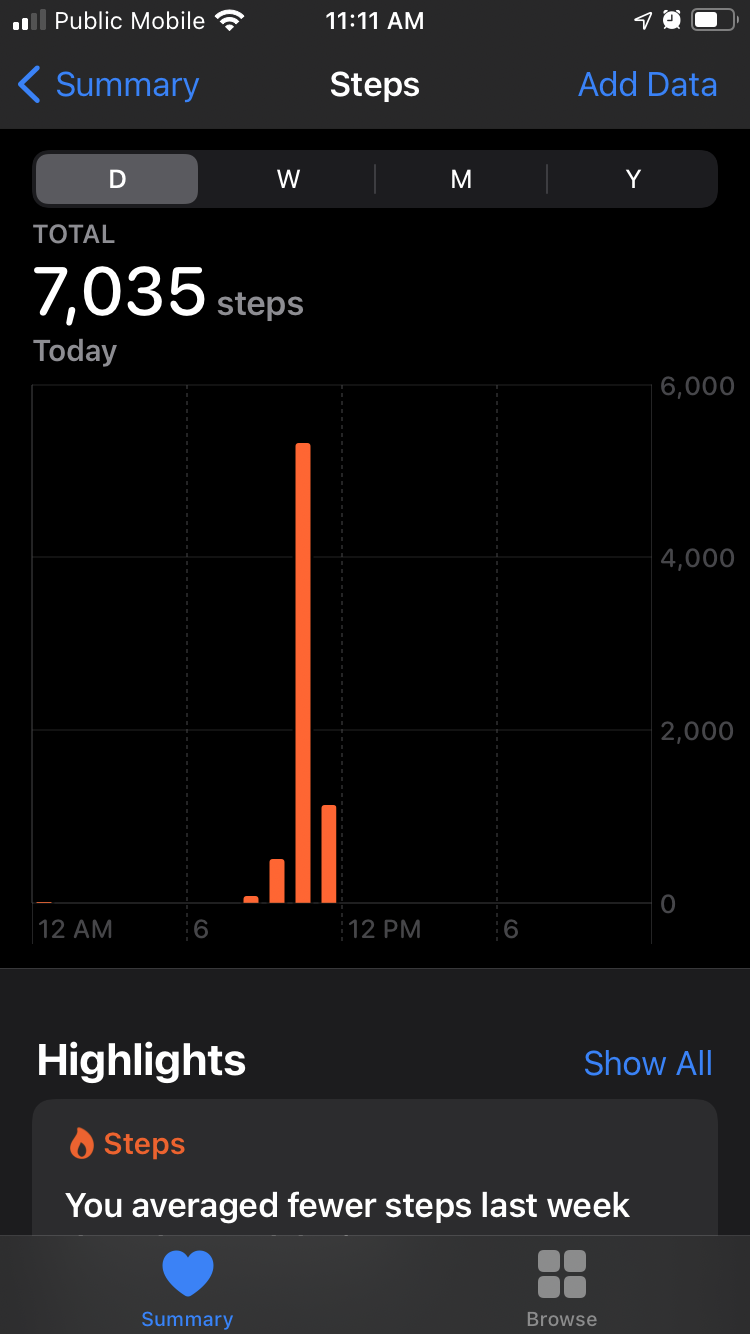
Because my deliveries took me into the heart of midtown, I took the opportunity to enjoy a bánh mì from Madame Vuong on the way home, making their street food actual street food:

The forecast called for rain, but it has yet to come. A very pleasant way to start the day.
Because of COVID-19, Charlottetown’s Christmas Parade was rejigged to become a multi-night neighbourhood ramble by a small contingent of emergency service vehicles. Tonight was the night for our “500 Lots” neighbourhood, and the crew just passed through, punctuated by Santa Claus on the PA.
The traditional parade is a seemingly-never-ending cavalcade of service clubs, marching bands, and every single fire truck from the surrounding 50 miles, made bearable by our habit, in recent years, of viewing it from the warmer confines of the front counter at Mr. Sushi.
This year we didn’t have to take off our slippers. It was on and done in about 35 seconds, and yet managed to convey all the community Christmas spirit that was needed. Kudos to the city mothers and fathers for finding a way to pull this off.
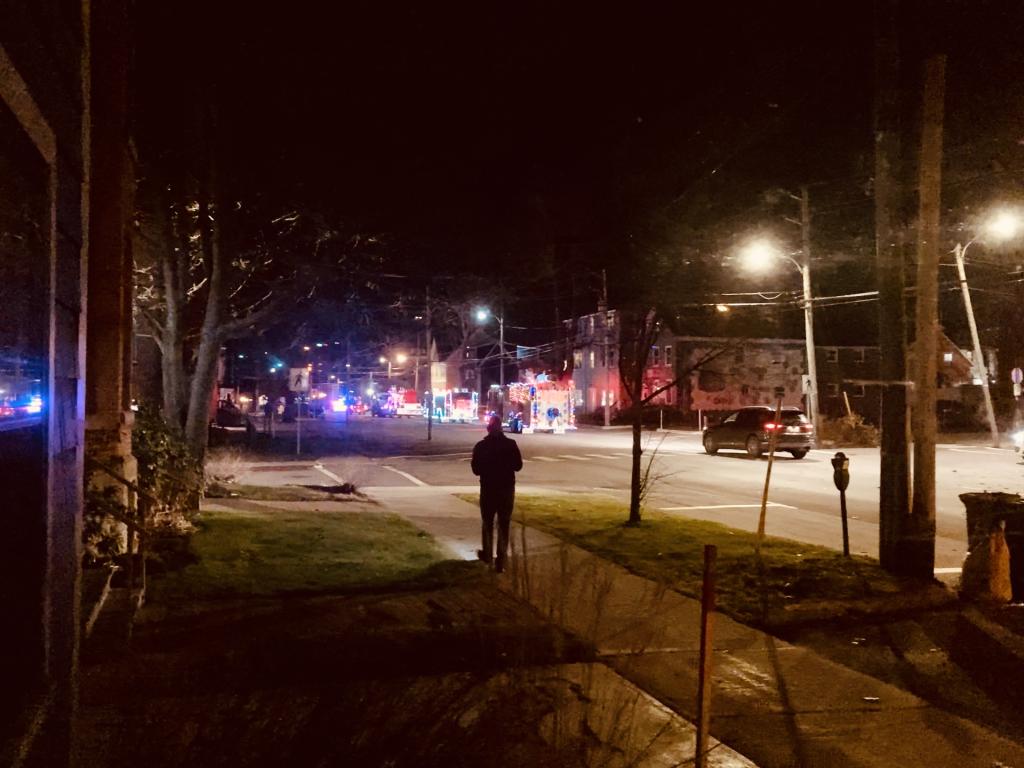
Nadja, who I have known since she was born, and whose mother I have known as long as anyone, has become a tea merchant, producing tea made from sustainably foraged, locally sourced plants.
It’s been almost a month since I opened an online shop for my letterpress goods. While I’ve dabbled in Etsy before, I never did it with heart and it was never sustained, so this is my first bona fide experience as an ecommerce retailer.
I’ve added a few additional items to the shop today:
- A Map is the Greatest of All Epic Poems, a broadside printed in 2018 on a serious of reproduction historic maps. I single copies of five different maps available.
- Japanese-bound Book, a product of the bookbinding course I took from Jennifer Brown in 2013.
- 50 Cents Stamp Book, another product of Jennifer’s course.
- Tidings of Comfort and Joy, my Christmas card from 2018.
Here’s how things have gone so far:
- Number of orders: 20
- Revenue: $464.71
- Number of visitors: 376
- Conversion rate: 5.3%
- Most viewed products:
- Most sold products:
It turns out that I love fulfilling orders, which is no surprise as I’m a love of stationery, and this is a funded excuse to indulge that.
In New horizons for office furniture, Matt Webb ruminates what we sit on (or swim through) when we Zoom.
I spend so much time on Zoom these days, I would prefer to be bobbing around in a salt-water bath with a virtual reality headset strapped to my face. Like the precogs in Minority Report.
Let me christen the term whergonomics for this emerging field.
“What kind of tree are you looking for?”, asked the jaunty Christmas forester.
“Um,” I replied, uncertain of how to respond (evergreen? festive? broad-needled? post-modern?).
Sensing that I was out of my depth, he deftly sauntered behind the tree that had caught my eye.
“Tall and bushy?”, he asked, Vanna Whiting my eyeline.
“Yes!”, I exclaimed.
He hefted the tree into the back of my KIA Soul. I paid him $40. I drove up the hill toward home.
It never occurred to me that the tree wouldn’t fit. But I need not have worried, as there are four inches to spare (I suppose there’s a standard Canadian ceiling height that trees are grown to hew to?).
“Catherine, where do we keep the Christmas tree stand? And that skirty thing?”
That’s what I’d normally be shouting up from the basement.
Except that I know the answer, because I put them away myself last January, as Catherine was in Palliative Care. Or at least I think I did. Perhaps someone did it for me?
Catherine went into hospital on December 17 last year, and came home on December 22. Her mother surprised us with a visit from Ontario on Christmas Eve. Catherine loved Christmas, and she especially loved being a mother at Christmas. It was as if the fates opened a window for her to have one last one, with those she loved, and who loved her.
And so the putting up of the Christmas tree this year is bittersweet: it’s the start of marking a beginning of an ending. But there’s a degree of “fuck yes, we’re still here, and we’re doing this thing” to it as well.
I got down in the dumps this week because all the dead movie wives leave years worth of birthday, anniversary, and holiday letters to their surviving movie husbands, and my real world (dyslexic) Catherine did not.
But then, watching Oliver carry the tree into the house, I realized she’d left me Oliver, and everything she taught him, and every example she set for him.
As Catherine’s prognosis evolved to “days, perhaps a week,” these were my words:
I wrote to a good friend this afternoon that “It’s sad, in a deep-down-body-sad kind of way. But it’s not only sad.”
And that is true: we laugh together when Oliver makes a joke. We gossip. I pass on kind wishes from near and far. And we sink into the contentment that Catherine radiates.
Catherine continues to radiate through this season. It won’t be nearly at all the same without her. But it will be something else.
Merry Christmas, everyone. Let’s do this thing!
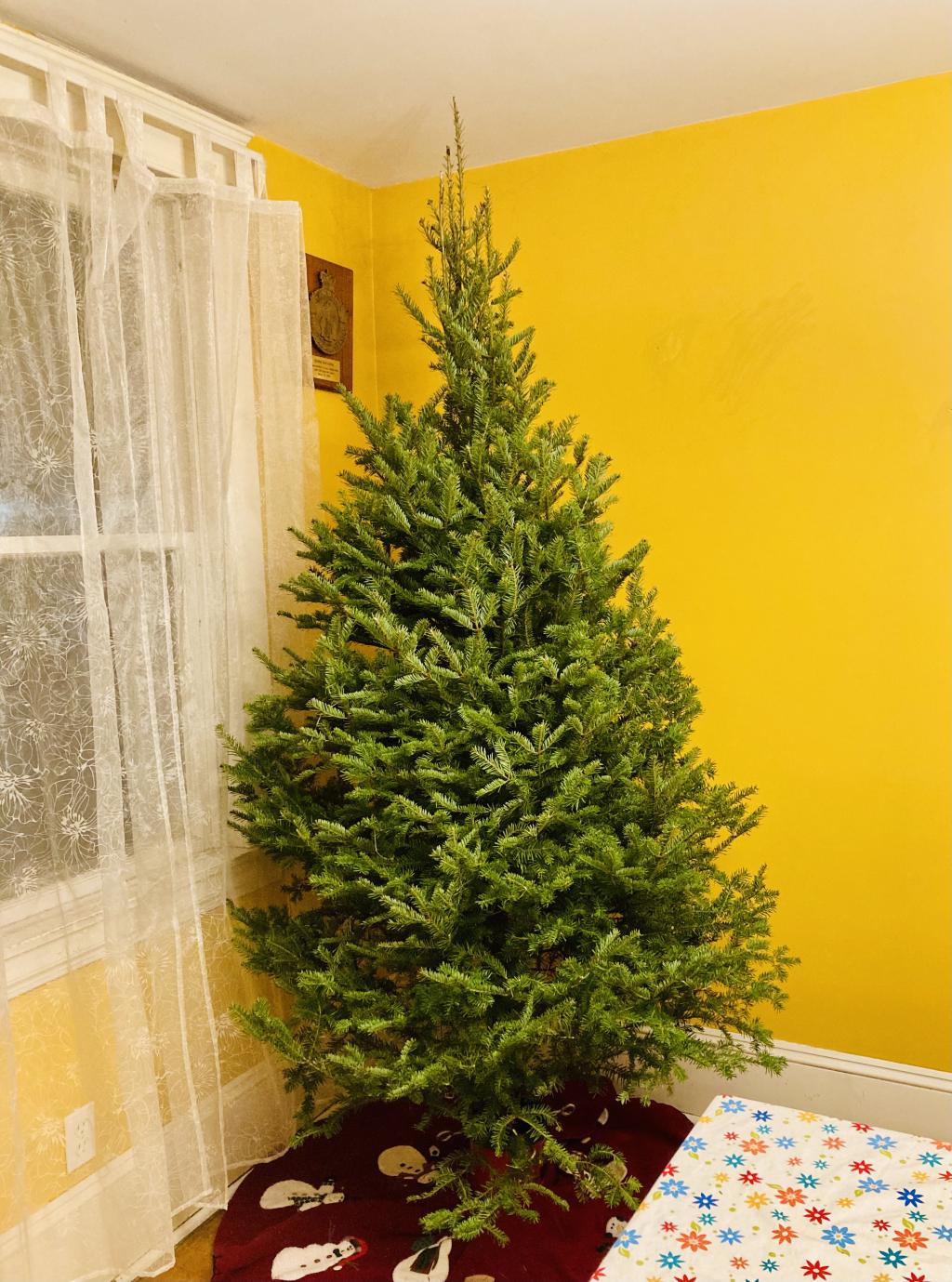
There’s a Christmas Tree stand at the end of Prince Street in front of Founders’ Hall; mindful of “killer drought combined with Trump election protests and COVID means there might not be enough trees”-style headlines, I knew I needed to act fast.
So, roughly 20 days earlier than I’m used to, I stopped in and picked one up. And then made Oliver carry it into the house. It’s drying out from the rain in the vestibule as I write.
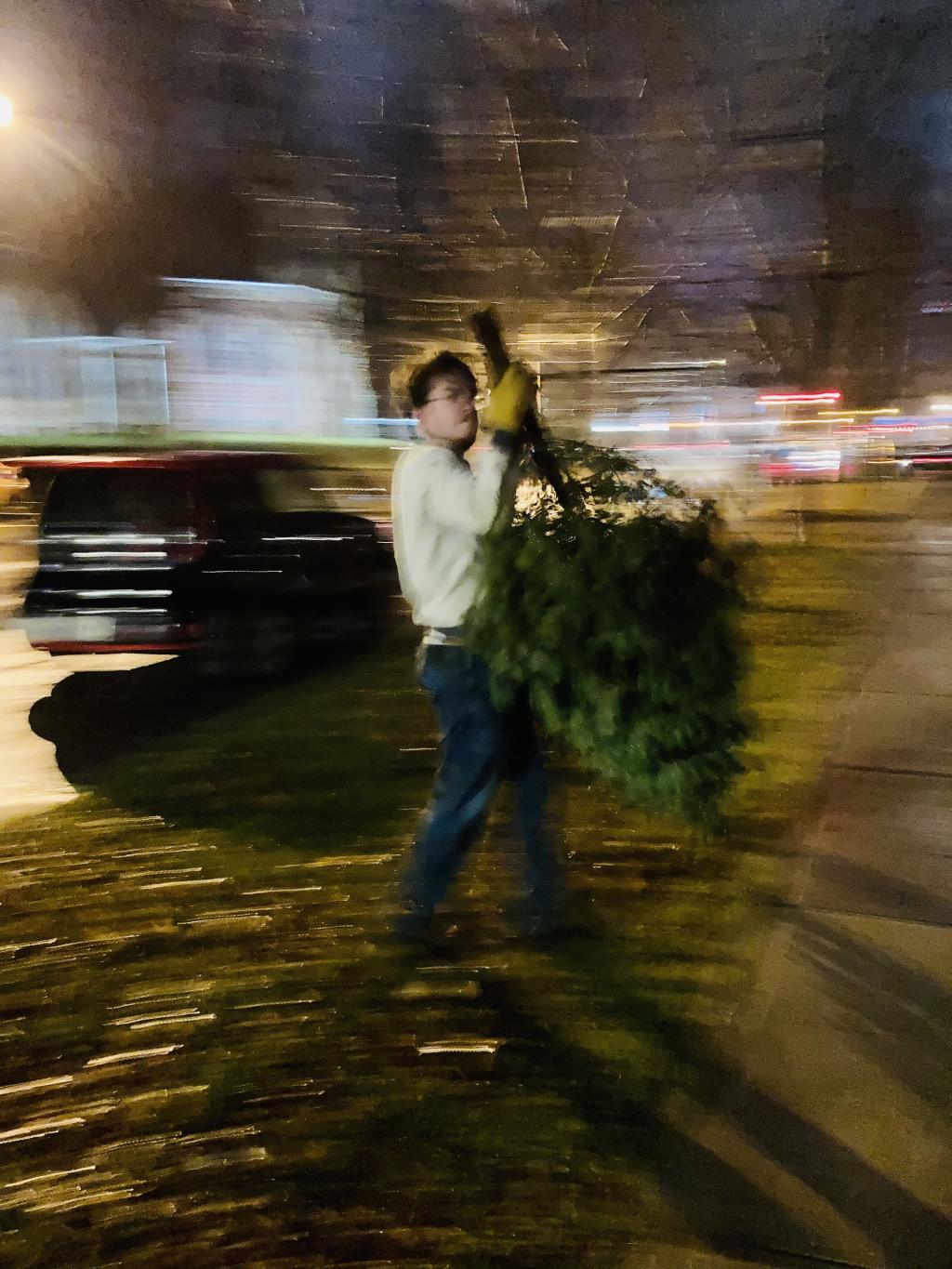
If you are a character in Oliver’s cinematic universe, you have, no doubt, been the recipient of his strident lobbying on behalf of Christmas, often distilled to its essence: send cards and gifts!!
Catherine, you see, was the Head of Christmas in our family. Leaving me to be cast in the role, often with some cause, of steely curmudgeon. The kind of person who leaves securing a tree until all the trees are gone, who wonders what the point of Christmas cake is, at all.
So, sensing a pending vacuum, Oliver has launched a marketing campaign to save Christmas.
Understandably, given past performance, he is skeptical about my protests that This Year I Will Rise To The Occasion. Truth be told, I will rise to the occasion. But it make take a year or two for Oliver to believe this.
So, fear not, Christmas is not in jeopardy.
If it are moved, nonetheless, to help Oliver fill the holiday vacuum, he is, confoundingly, non-specific in his wishes, which are “things that bring joy and relieve sadness and grief.” The ball is in your court, Christmas-lovers.
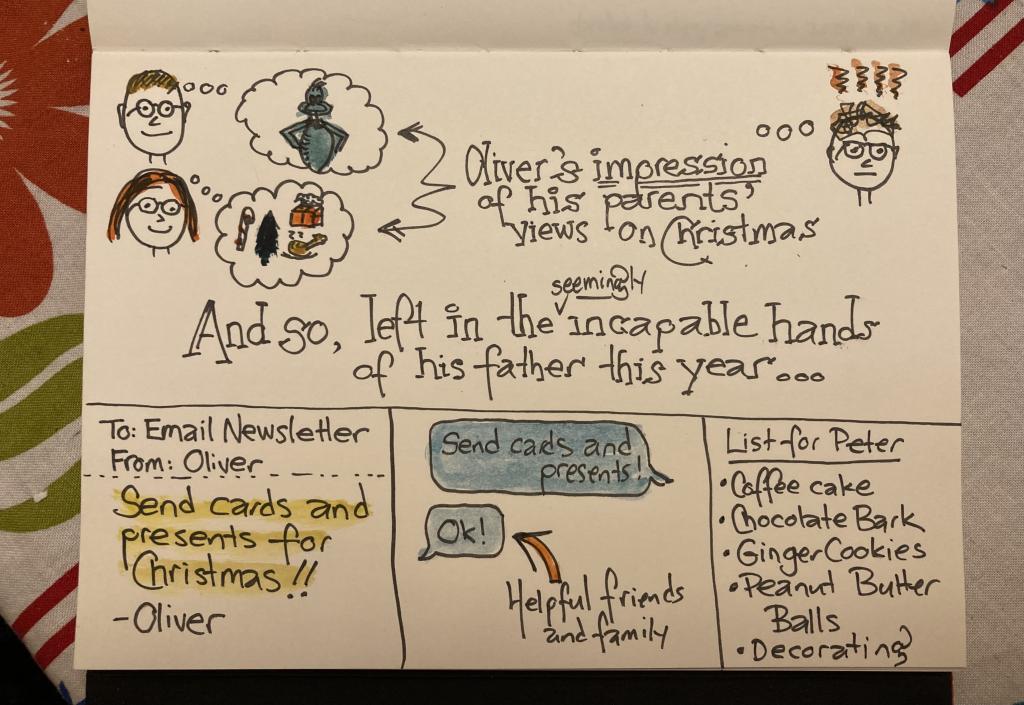
Remember other continents!? Ten years ago today my crew was en route from Munich to Basel by train, and feeling the jetlag heavy.
 I am
I am